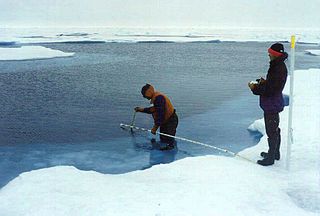Is Climate Change Just Another Environmental Problem?
Here’s a terrific piece on climate change, which contains a very powerful infographic, and makes the point that it’s wrong to include this phenomenon as an “environmental problem.”
Say what?
Unlike other pollutants, e.g., particulate matter that falls out of the atmosphere in a period of weeks or months, carbon dioxide stays in the atmosphere for decades or centuries. We’re not talking about “additive,” but about “cumulative” effects.
I’m reminded of a high school biology paper I wrote on noise pollution, in which I concluded that this was a negligible issue, since it would cease to be a problem the very second that we stopped creating it. My teacher found my reasoning to be cavalier — but I still maintain that I had a decent point there.
The real issue with CO2 in the atmosphere is that bringing its concentration down to 350 parts per million, i.e., where scientists say it needs to be if we are to avert catastrophe, requires both aggressive reductions in fossil fuel consumption (which accounts for 80% of the contributions) as well as a significant amount of time.


Here’s what impacted me in the article:
“Take a familiar air pollutant like particulate matter. We are spewing it into the air from tailpipes and smokestacks (the faucet). It leaves the air through simple gravity (the drain). Most of it falls to earth in days or weeks…”
“Carbon dioxide is not like that. Once it’s in the tub, it stays there for up to 100 years before it drains out. And the drain in the bathtub (so-called “sinks” that absorb carbon out of the air, like oceans and forests) is comparatively small relative to the enormous amounts coming out of the faucet. And by the way, we’re actively making the drain smaller by cutting down forests and carbon-loading the oceans.
“This makes for a very different situation. Even if we cut our emissions by a third tomorrow, we would still be increasing the total amount in the bathtub…”
“The typical climate-policy targets that get thrown around — reducing emission rates by 80 percent by 2050, for example — are relatively meaningless. They focus on the rate of flow from the faucet. But that’s not what matters. What matters is the amount in the tub. If the tub fills up enough, global average temperature will rise more than 2 degrees Celsius and we’ll be in trouble. Avoiding that — staying within our “carbon budget” — is the name of the game.
“The public-policy implications are straightforward: Because CO2 is slow to drain, and the damages are cumulative, we need to reduce the amount of CO2 we’re spewing out of the faucet now, as much as possible, as quickly as possible. Yes, we’ll need new technologies and techniques to drive emissions down near to zero, and we should R&D the hell out of them. But we absolutely cannot afford to wait. There is no benign neglect possible here…”
“…the way many people subconsciously think about climate change. If we heat the planet up too much, we’ll just fix it! We’ll turn the temperature back down. We’ll get around to it once the market has delivered economically ideal solutions.
“But as this 2009 paper in Nature (among many others) makes clear, it doesn’t work that way:
“‘This paper shows that the climate change that takes place due to increases in carbon dioxide concentration is largely irreversible for 1,000 years after emissions stop. Following cessation of emissions, removal of atmospheric carbon dioxide decreases radiative forcing, but is largely compensated by slower loss of heat to the ocean, so that atmospheric temperatures do not drop significantly for at least 1,000 years.'”
“This is not the time cycle of particulate pollution — days or weeks — it is the time cycle of the Earth’s basic biophysical systems, which move much more slowly. A thousand years is not “forever,” but in terms of human agency it might as well be.
“The damage we’re doing now is something the next 40 to 50 generations will have to cope with, even if we stop emitting CO2 tomorrow. And the CO2 we’ve already released has locked in another 50 or 100 years of damage (because of the slow draining). There is no “reversing” climate change. There is only reducing the amount we change the climate.
“Both these facts about climate change set it apart from other environmental problems. They also, for what it’s worth, set it apart from social problems like poverty, crime, or poor healthcare. All of those problems are serious; they all have an impact on public health. But they can all be measurably affected by public policy within our lifetimes. They are bad but they are not cumulative. They are not becoming less solvable over time.”
This elucidation reminds me of a recent economic inequality survey where the respondents’ ideal is reasonable, and people think that the reality is bad, but it’s actually far worse than people suspect. The difference being that economic inequality would be resolved fairly rapidly by increased fairness with regard to profit and productivity, while climate disruption has even a much colder calculus, and it requires society to change its core structures – and do so quickly.
I don’t have all the answers, but question time is plainly running short.